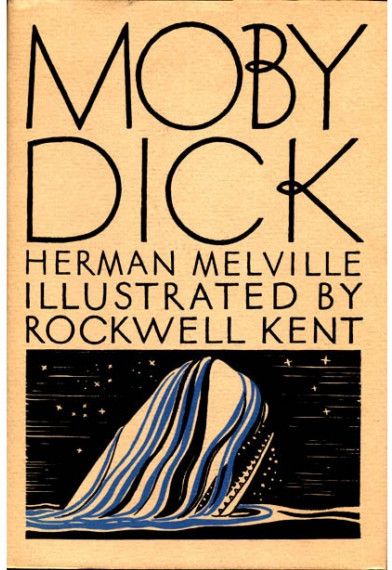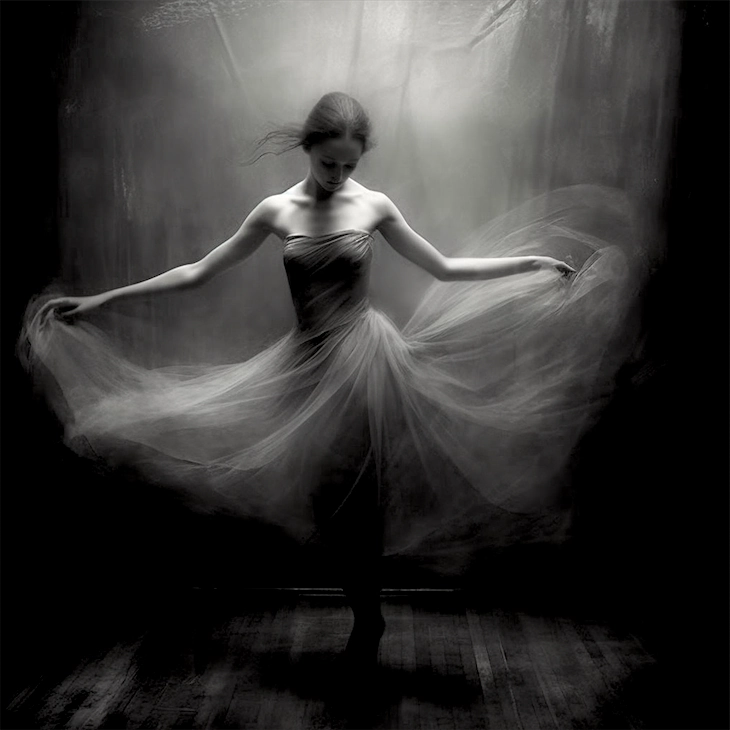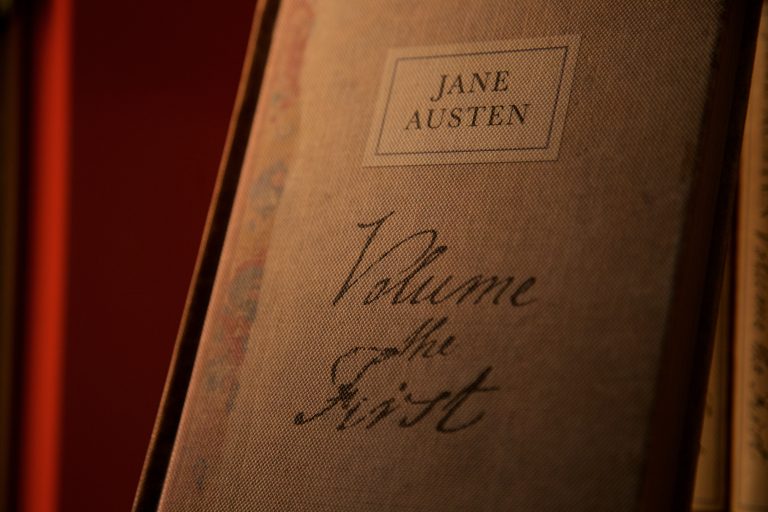Writing Beautiful Sentences: The Years by Virginia Woolf
Writing Beautiful Sentences: The Years by Virginia Woolf

It was an uncertain spring. The weather, perpetually changing, sent clouds of blue and of purple flying over the land. In the country farmers, looking at the fields, were apprehensive; in London umbrellas were opened and then shut by people looking up at the sky. But in April such weather was to be expected.
Thousands of shop assistants made that remark, as they handed neat parcels to ladies in flounced dresses standing on the other side of the counter at Whiteley’s and the Army and Navy Stores. Interminable processions of shoppers in the West end, of business men in the East, paraded the pavements, like caravans perpetually marching,—so it seemed to those who had any reason to pause, say, to post a letter, or at a club window in Piccadilly.
The stream of landaus, victorias and hansom cabs was incessant; for the season was beginning. In the quieter streets musicians doled out their frail and for the most part melancholy pipe of sound, which was echoed, or parodied, here in the trees of Hyde Park, here in St. James’s by the twitter of sparrows and the sudden outbursts of the amorous but intermittent thrush.
The pigeons in the squares shuffled in the tree tops, letting fall a twig or two, and crooned over and over again the lullaby that was always interrupted.
The gates at the Marble Arch and Apsley House were blocked in the afternoon by ladies in many-coloured dresses wearing bustles, and by gentlemen in frock coats carrying canes, wearing carnations. Here came the Princess, and as she passed hats were lifted. In the basements of the long avenues of the residential quarters servant girls in cap and apron prepared tea.
Deviously ascending from the basement the silver teapot was placed on the table, and virgins and spinsters with hands that had staunched the sores of Bermondsey and Hoxton carefully measured out one, two, three, four spoonfuls of tea.
When the sun went down a million little gaslights, shaped like the eyes in peacocks’ feathers, opened in their glass cages, but nevertheless broad stretches of darkness were left on the pavement.
The mixed light of the lamps and the setting sun was reflected equally in the placid waters of the Round Pond and the Serpentine. Diners-out, trotting over the Bridge in hansom cabs, looked for a moment at the charming vista.
At length the moon rose and its polished coin, though obscured now and then by wisps of cloud, shone out with serenity, with severity, or perhaps with complete indifference. Slowly wheeling, like the rays of a searchlight, the days, the weeks, the years passed one after another across the sky.
Virginia Woolf, The Years
The Text Itself.
Firstly, this is not written primary to convey information. This is what it is saying.
The passage describes the unpredictable weather of spring in London, with farmers and city-goers alike feeling uncertain. Despite this, the season brings a bustling atmosphere to the city, with shoppers, carriages, and musicians filling the streets. As evening approaches, gaslights and the moonlight reflect peacefully in the Round Pond and the Serpentine. The passage ends with a sense of time passing by as the sky moves on.
Or more succinctly:
The weather in England in spring is uncertain but even so, people do go out.
This is written to draw the reader in, using a rhetorical device called enargia which uses sensory description to provoke perceptual responses in readers/listeners as if they were there.
Your attention and your consciousness is transferred from your room or the train you’re reading this on, and you are, through the power of Virginia Woolf’s writing technique, at least partly in London in Spring at the beginning of the 20th Century and not only that, you are now upper-middle class (if you weren’t before)
The other thing that is happening is music.
We know that music through patterns of sound, that is different notes, rhythms and repetition can also spirit us away to far off places. She’s doing that too.
Virginia Woolf writes very nice sentences — very nice.
A third thing that she’s doing is creating distance by using impersonal constructions. We’re not seeing it through anyone’s eyes in particular:
It was…. The only thing that has an active role in this is the weather sending its clouds.
Farmers, ladies, shoppers, business men, that is no one in particular, but everyone in general.
This is the distance of a camera’s eye. The camera has no emotional investment in what it sees. It doesn’t care who does what, and that cinematic view is what is created here.
We should say that this book was published in 1937. We know that Virginia Woolf was interested in the cinema, and she wrote an essay on cinema after watching the 1920 German Expressionist Film: The Cabinet of Dr Caligari. The essay, entitled, The Cinema, in 1926, in which she said:
We behold them as they are when we are not there. We see life as it is when we have no part in it. As we gaze we seem to be removed from the pettiness of actual existence. The horse will not knock us down. The king will not grasp our hands. The wave will not wet our feet. … Further, all this happened ten years ago, we are told. We are beholding a world which has gone beneath the waves.
Virginia Woolf, 1926
That’s what we’ve got here.
Sentences
It was an uncertain spring.
She begins with a short declarative sentence. It’s passive but remember she’s pretending to be a camera. It finishes with a monosyllable. Short sentences are good to use before long complex, sentences, or after long, complex sentences. If you end in a monosyllable it is better percussion.
The weather, perpetually changing, sent clouds of blue and of purple flying over the land.
And the we have a long sentence. Technically, it’s probably a cumulative sentence which is where we start with the main clause, which in this case is:
The weather sent clouds over the land.
and add a string of subclauses, but it’s actually what I call an ‘interrupted sentence’ because to me the main sense conveyed by the simple main clause is interrupted by additional thoughts, so
The weather (which was perpetually changing) sent clouds (which were blue and purple and flew by) over the land.
Very long, complex, interrupted sentences were produced by such writers as Henry James and William Faulkner, but they were a very Victorian thing to do. When Hemmingway came, that all changed, and they fell out of fashion, but long interrupted sentences add a rippling, darting rhythm and work very well when mixed with short, simple sentences.
In the country farmers, looking at the fields, were apprehensive; in London umbrellas were opened and then shut by people looking up at the sky.
This is also a long-ish sentence interrupted by additional thoughts. But it begins with a sub clause. Sentences with subclauses show us which is the most important information by placing it first. If the most important information is in the sub-clauses then put it before the main clause. Where the information in the sub-clause is less important, put it after the main clause.
So this is really:
(In the country) FARMERS (looking at the fields) WERE APPREHENSIVE.
There are really two sentences here joined by a semicolon, but a semicolon is a shorter stop (think quavers and crotchets) than a full stop (period). She could have written:
Farmers were apprehensive looking at the fields in the country. But hers sounds better because of the rhythm of clauses.
We have a parallelism here too which is a device of rhythm
In the country, farmers…. In London, people…
Perhaps it would have been better as a fully parallel structure.
In the country, famers, looking at the fields were apprehensive; in the city, people, looking at the sky, opened, but then shut their umbrellas.
I chose but instead of and in the last sentence because it is a heavier beat, like a heavier beat on a drum. I don’t think the comma is necessary, but it helps with the rhythm.
But in April such weather was to be expected.
After a run of longer sentences, we have a shorter one. It doesn’t end with a monosyllable so it trails off more than it ends with a thump.
Virginia generally uses longer interrupted sentences, so we have a nice run of them and it’s like a kite being given more string in the wind, it darts and way and bobs and weaves.
Thousands of shop assistants made that remark, as they handed neat parcels to ladies in flounced dresses standing on the other side of the counter at Whiteley’s and the Army and Navy Stores.
This is more like a standard cumulative sentence. It stars with the main clause and could have ended there, except she want to paint a picture and keep the music going.
[Thousands of shop assistants made that remark, (as they handed neat parcels) (to ladies in flounced dresses) (standing on the other side of the counter) (at Whiteley’s) (and the Army and Navy Stores).
She just adds new thoughts. I used to think the type of clause was important for the music, and while I still think it is for repetition and parallelism, (for example a string of adverbial phrases or a string of participial phrases rather than mixing adverbial and participial sounds better to my ear). But here it’s just the rhythm and almost like the trailing off of the main clause. None of those are necessary for sense, it’s just the rhytyhm.
Interminable processions of shoppers in the West end, of business men in the East, paraded the pavements, like caravans perpetually marching,—so it seemed to those who had any reason to pause, say, to post a letter, or at a club window in Piccadilly.
Here subject here is ‘Interminable processions of shoppers’ a nominal phrase standing in for a simple subject. So ‘Shoppers’. But she interrupts the main clause again
Interiminable processions of shoppers (in the East End) (of business men = adding to the subject so it’s shoppers and businessmen not quite together) paraded the pavements.
Here we get a little alliteration as well. Alliteration is like repeating the same notes in music. ‘Paraded the Pavements.’
Then we add another little clause (like caravans perpetually marching).
I think the dash could be replaced technically with a full stop, but it is less of a break and so the music continues:
So it seemed (to those) (who had any reason to pause) (say) (to post a letter) (or at a club window) (in Piccadilly)
That’s probably enough for now to show how she uses the rhythm of her sentences with lots of additional phrases trailing after, but more usually interrupting her main clauses — and she does it, not for clarity or communication, or even to paint pictures with the detail, but for rhythm and music.
She could give us all the visual information in far simpler sentences, but she chooses to do it this way for reasons of style
Let us Try
This is the scariest part. But we must venture.
Using the same kind of structures, as Virigina Woolf does, let me have a go at writing a paragraph:
The monsoon was expected. The rain clouds, vaguely gathering, promised a deluge of monumental proportions over both city and county alike. In their fields, farmers watching the sky, were unsettled; in the city, businessmen remembered umbrellas and joked of rain. But in June, such rain is to be expected. Waiters said as much as they handed tiffin trays to office workers in linen suits waiting on the far side of the counter at the Irani cafes or from the counters of mobile market stalls. Heaving crowds of shoppers at Colaba Causeway, of sunbathers at Chowpatty Beach, watched the sky, like weathermen on a day off — so it seemed to those who had cause to pause, perhaps to post a card, or glance in the window of a store at Bandra West.



